In this article, I will look at the history of polyphonic electronic sound sources that can produce chords. The Moog synthesizer was introduced in 1964, but polyphonic electronic musical instruments first appeared on the market in 1937 in the form of electronic organs.
1937 Hammond Novachord Vacuum Tube Organ
Hammond released an electronic organ with a frequency divider circuit. At this time, transistors had not yet been put to practical use, so the circuit was made up of over 100 vacuum tubes. The inside was ahead of its time, with a subtractive filter and envelope incorporated, and it was possible to create not only organ sounds, but also a variety of other tones. It could be said to be the oldest fully polyphonic synthesizer. If you search YouTube, you can see videos of the actual machine being played.
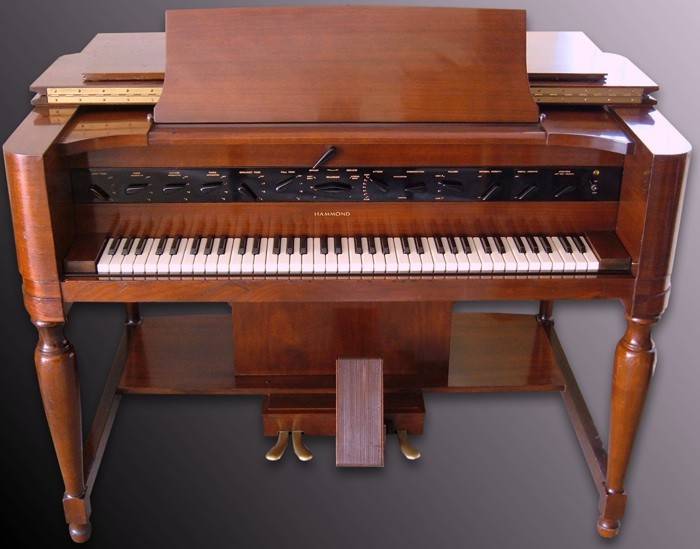
Hammond Novachord, CC BY 3.0 (quoted from Wikipedia)
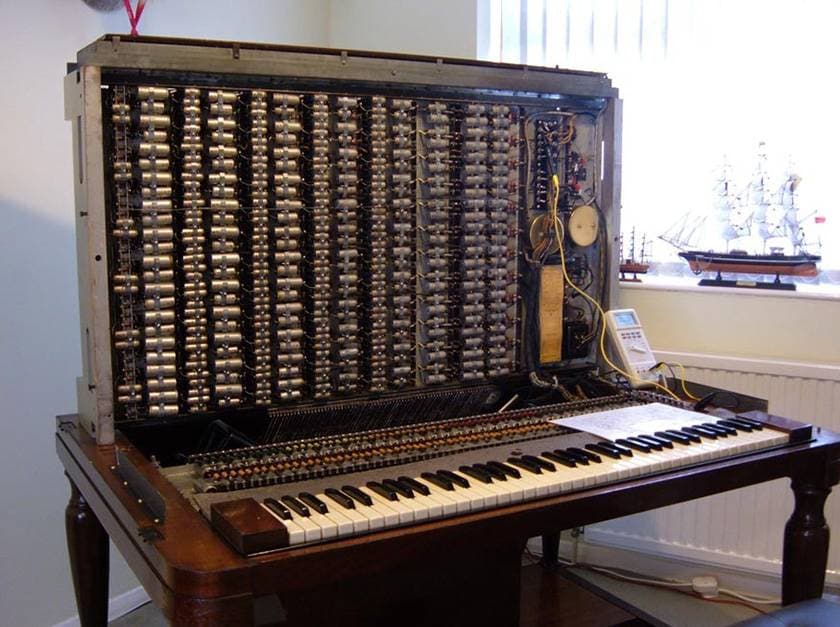
Novachord insides, CC BY 3.0 (quoted from Wikipedia)
After that, various electronic organs were released by overseas manufacturers. All of them had a circuit configuration centered around vacuum tubes. Functionally, there were few ambitious models like the early Novachord, and it seems that the direction became more inexpensive and practical. As I found out through my research, the only electronic musical instruments sold during this period were organs. Why were they all organs? I think there was demand for them, but at the same time, it seems that they were also a tone that was convenient for electronic sound sources.
Basically, an organ only needs to produce a uniform sound for as long as the keys are pressed, so it seems that it should be possible to make one with just an electronic oscillator and a switch. Also, with an organ, the variation in tone is not that important. As long as the sound is good, it doesn't matter if it's just one tone.
1959 Yamaha Electone D-1 350,000 yen
The electronic organ, which was designed mainly around transistors, was released by Yamaha in 1959. This is where the history of the Electone begins. It seems that most of the circuits were made up of transistors, but the amplifier was made using vacuum tubes. At this time, vacuum tubes were still very much in use.
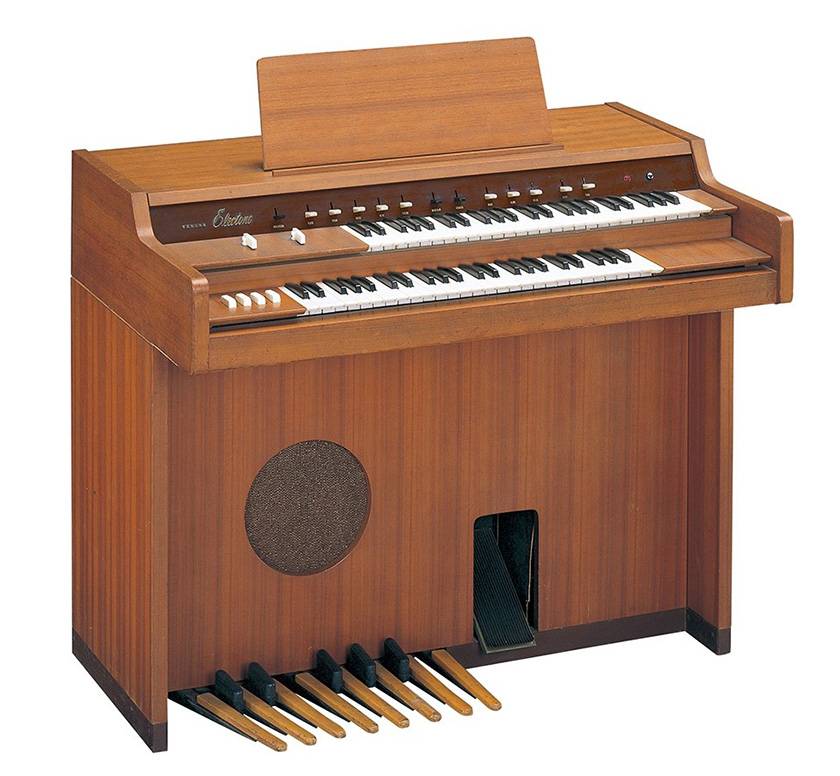
Photo: Manufacturer's website
1962 VOX Continental
In the 1960s, portable frequency-division circuit organs also appeared, which were often used in popular music. These too were made smaller by the use of transistors.
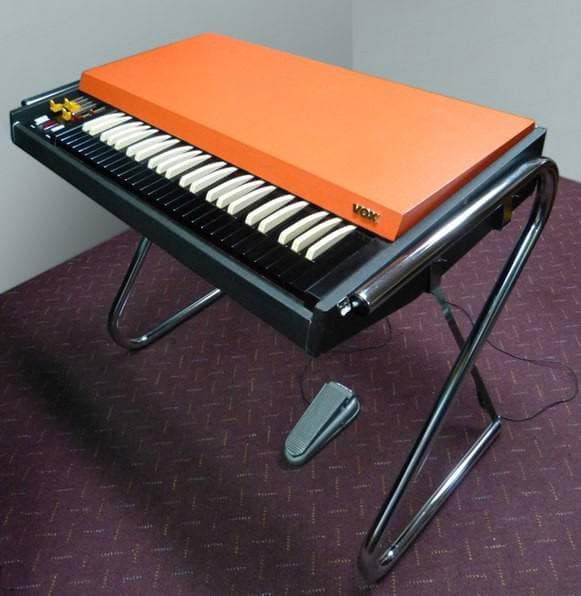
VOX Continental, CC BY-SA 4.0 (quoted from Wikipedia)
1974 Solina String Ensemble
Other than organs with frequency dividing circuits, the most famous example is the string machine. As the name suggests, it produces a sound similar to that of electronic strings. It was often used in popular music. The distinctive noisy sound of the BBD element has a very atmospheric quality when heard today. In the 1970s, integration progressed and it became possible to make instruments relatively compact.
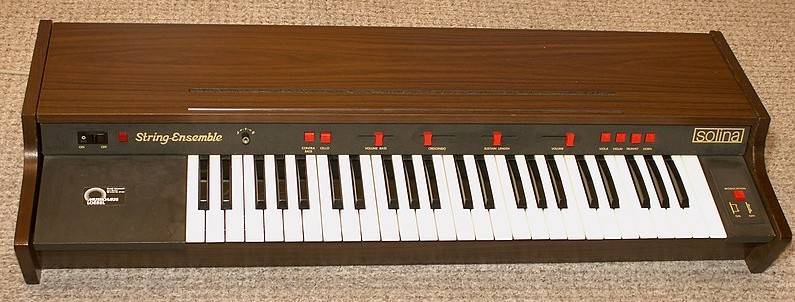
SolinaStringEnsemble, Public domain (quoted from Wikipedia)
1979 Roland VP-330 Vocoder Plus 295,000 yen
This string machine with a vocoder function was used in popular music around the world. A reproduction model of this model is currently available from Behringer as the VC-340.
Until the 1970s, polyphonic electronic keyboard instruments were made using frequency division circuits, but in the 1980s the wave of digitalization hit all at once, and it became possible to achieve polyphony using a different method. Frequency division circuits, which require a large number of parts and are expensive, are no longer used.
How the Frequency Division Circuit Works
The advantage of the frequency division circuit is that it allows all the keys to be sounded simultaneously. Whereas the Moog synthesizer can only produce single notes, the frequency division circuit allows all the keys to be sounded simultaneously, just like an acoustic piano.
To explain the structure briefly, first a high-frequency signal is taken from a quartz oscillator that vibrates accurately. This frequency is then divided down to any desired frequency using a circuit called a frequency divider. The frequency is reduced to the highest note used in musical instruments, and 12 notes are prepared, one octave for each of the highest notes on the keyboard. The mechanism then works by further reducing the pitch of each note by one octave, and then by another octave, to secure the required pitch range.
Crystal Oscillator
A crystal oscillator is a piezoelectric element that vibrates stably when a voltage is applied. Musical instruments use oscillators that vibrate at several hundred kHz to several MHz. In recent computers, oscillators that vibrate at several GHz are not uncommon. The piezoelectric effect of quartz was discovered in 1880, but it took some time before it was put to practical use. In 1927, the first quartz clock was made at Bell Laboratories. A crystal oscillator that vibrates at 50kHz was used in a frequency divider circuit to reduce the frequency to 1Hz = 1 second, and a synchronous motor was turned. The accuracy was within 30 seconds per year, making it the most accurate clock of its time. Ten years later, in 1937, the Hammond Novachord was released, which used the same frequency division circuit as the quartz watch.
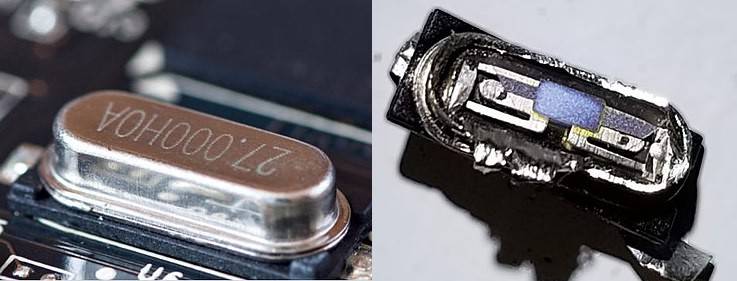
Quartz crystal internal, CC BY-SA 4.0 (quoted from Wikipedia)
Divider Circuit Configured with Logic Circuit
Even if the frequency of the crystal oscillator is taken out as an electrical signal as it is, it is slightly above the audible range, so it cannot be heard as a sound. Therefore, it is necessary to use a circuit to reduce the frequency, and a frequency divider circuit is created using a logic circuit called a D (Delay) flip-flop. Logic circuits are circuits used for digital signal processing, and the smallest unit is as follows. All of them have one output for one or two inputs. The input is either 0 or 1, and the output is also either 0 or 1.

The D flip-flop circuit is a circuit that can remember the state while the current is flowing, count the frequency and process it, and drop the frequency by half by combining the above logic circuits. It is a circuit that combines NOT and NAND as shown below.
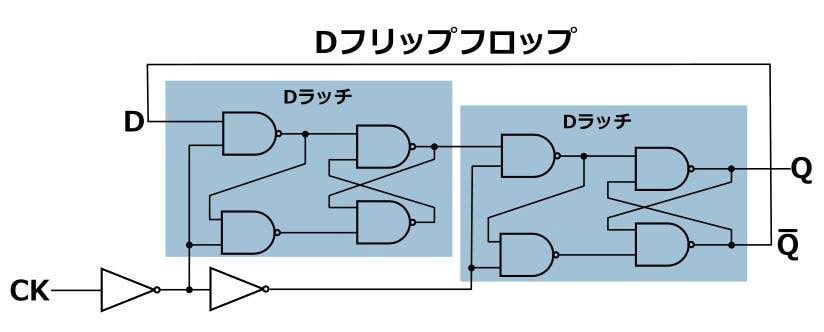
NOT outputs 0 if the input is 1, and outputs 1 if 0 is input.
NAND outputs 1 if either of the inputs is 1 or if both inputs are 0, and outputs 0 if both inputs are 1.
I'll skip the details of the D flip-flop, but CK is the clock and Q is returned to D. As a result, an octave lower frequency is output from the output Q.

As you can imagine from the circuit, the waveform is based on a square wave, so it does not have the same range of oscillator waveforms as a Moog synthesizer. Basically, you create sounds using filters, so in terms of sound variation, it cannot compete with a Moog synthesizer.
Are Musical Instruments that Use Frequency Division Circuits Digital Musical Instruments?
The circuit above is clearly a digital circuit. However, when it comes to polyphonic instruments that use a frequency division circuit, it's difficult to say whether they are digital instruments or not. The frequency division circuit itself is a digital circuit, but the rest of the circuit is analog, and the sound processing is completely analog. It could be said to have a hybrid structure, but the sound impression is analog, so it is generally referred to as an analog electronic musical instrument. In the case of musical instruments, if the waveform itself is managed digitally and many processes are carried out digitally, it tends to be called a digital synthesizer.
As a side note, there is also a problem with watches caused by the difference between analog and digital. Although quartz watches use digital circuits internally, in the watch industry, it seems that the decision of whether to call it analog or digital is actually made by the face of the watch. If the hands move physically, it is analog, and if numbers are displayed on an LCD screen, it is digital. It seems that in many fields, decisions are often made based on impressions rather than internal principles.
The “sound & person” column is made up of contributions from you.
For details about contributing, click here.





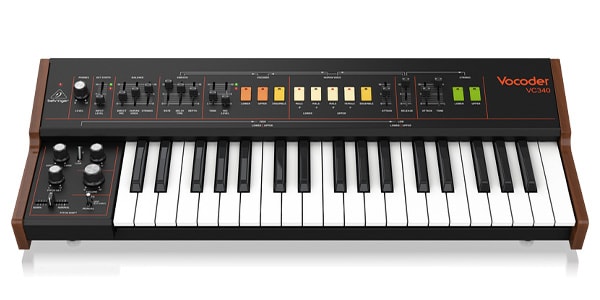








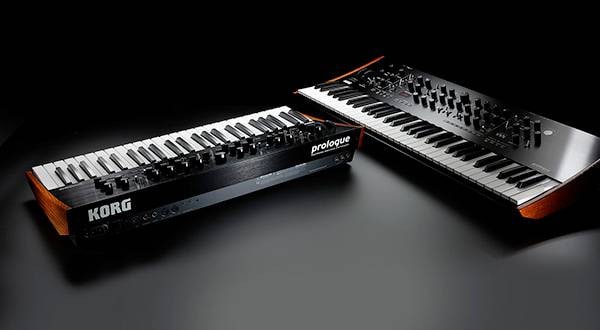
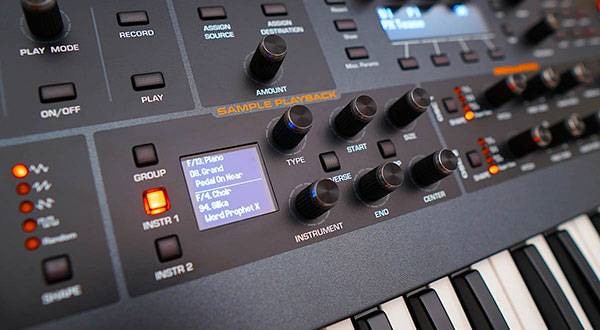
![[2025 Latest Edition] Choosing a Synthesizer/Popular Synthesizers Ranking](/contents/uploads/thumbs/2/2022/9/20220916_2_19446_1.jpg)

![[For beginners] Keyboard types and how to choose one](/contents/uploads/thumbs/2/2020/9/20200923_2_11196_1.jpg)
 USB接続対応のMIDIキーボード
USB接続対応のMIDIキーボード
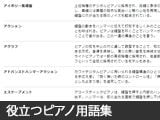 自分にあったピアノを選ぼう!役立つピアノ用語集
自分にあったピアノを選ぼう!役立つピアノ用語集
 各メーカーの鍵盤比較
各メーカーの鍵盤比較
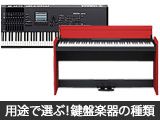 用途で選ぶ!鍵盤楽器の種類
用途で選ぶ!鍵盤楽器の種類
 キーボードスタートガイド
キーボードスタートガイド
 キーボード・ピアノ講座
キーボード・ピアノ講座















